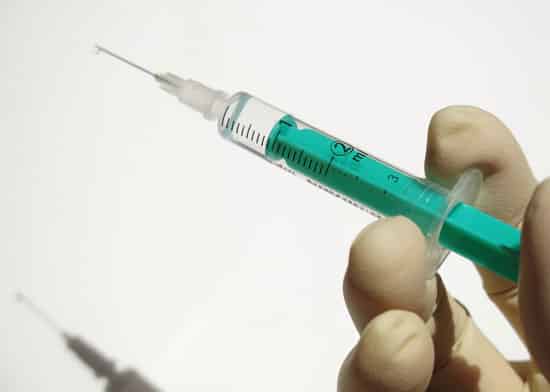Dermal fillers vs botulinum toxins
Nowadays, dermal fillers are joining botulinum toxins as the most commonly used aesthetic injectables. And, while both are known to reduce the visible signs of aging, they vary greatly in their corrective modes of action. While botulinum toxins work to relax facial musclesand thus reduce dynamic wrinklesvia paralysis, dermal fillers volumize the dermis. With this, dermal fillers are used to sculpt and reshape the face, smoothing out wrinkles and adding youthful texture back into the skin.
Due to their variety of benefits, dermal fillersespecially those that are hyaluronic acid-basedare gaining increasing popularity with patients. When combined with their efficacy and safety rating, they’re an excellent choice for patients looking to revamp their lookwithout going under the knife.
This being said, dermal fillers’ flexible usage makes their dosing more difficult to understand than botulinum toxin’s standardized options. In this article, we will outline the proper dosing guidelines for two specific indications: the nasolabial folds and the marionette lines.
Formation of nasolabial folds and marionettes lines
During the aging process, the midfacial soft tissues descend from the cheeks, creating a pronounced fold between the mouth and nose. This is known as the nasolabial fold, and resembles a set of parentheses. Further drooping of the midfacial soft tissues creates an extension of the nasolabial folds from the corners of the mouth to the chin. These are known as marionette lines, as they resemble the vertical lines on the lower face of a ventriloquist’s dummy. These lines are usually corrected at the same time as the nasolabial folds.
Typically, women with moderate nasolabial folds and marionette lines will require 24ml of hyaluronic acid dermal fillers. However, patients with thin skin have a higher risk of palpability or visibility, so deeper injections and smaller amounts of filler injections should be used. This being said, it is important to take the patient’s face as a whole into consideration: treatment on these folds alone may not create their desired results. As such, the exact amount of dermal filler required for facial correction may depend on the patient’s expected results, as well as the area to be treated and their budget.
Technique
Correction of volume deficits
Nasolabial and marionette lines can be corrected via the volumization of nearby depleted areas. There are quite a few injection techniques that are available for volume deficit in these regions, including cross-hatching, fanning, serial puncture, and threading. Some practitioners advocate the serial puncture and linear threading techniques as the best option for these issues. However, a combination of all aforementioned techniques is often best for optimal correction.
When injecting into the nasolabial fold, you should begin at the inferior aspect of the crease and gradually proceed superiorly. This will help you to gauge the interaction of the filler material with the tissue, and allow the patient to adjust to the injection process. The needle is inserted into the skin about 0.1mm deep, and the orifice of the needle should be oriented either medially or towards the dermis. Begin with 0.2ml of product and slowly adjust as required. A total of 0.5 to 2ml of dermal filler for both nasolabial folds is reasonable. Avoid lateral injections due to this area’s proximity to the cheeks. As you move superiorly, orient the needle so that it is slightly horizontal to the fold, as this assist with the blending of the filler.
For marionette lines, a total of 2 to 3ml of filler should be used to achieve adequate correction.4 Start with the inferior aspect of the crease. Inject small amounts of material here and slowly move on to the corners of the mouth. In this dynamic area, partial to complete correction is possible, but overcorrection can lead to lumps that are visible or felt intraorally under the oral mucosa, as well as a strange appearance upon animation. Adequate volume placed in this area will restore the corner of the mouth to a horizontal, neutral position and make a significant cosmetic difference.
Correction of folds
While lines and folds are frequently mistaken as synonymous, folds generally precede the formation of lines. For the correction of folds (overhanging skin), the cross-hatching technique is preferred, as the injected filler can be used for support.
Product selection
For these specific cosmetic issues, it is recommended to use a firmer, thicker cross-linked hyaluronic acid dermal filler. Examples of such a filler include Dermal Revolution DEEP, Belotero Plus Intense, Restylane Perlane, or Juvederm Ultra 4. These options generally last between 9 to 12 months, and also require less volume with subsequent treatments.
Complications
Pain, erythema, swelling, bruising and inflammation are the most common adverse effects reported after the injection of dermal fillers. However, these issues are transient and respond well to treatment. Asymmetry may also occur, but is uncommon. Hematomas are also short-lived and should serve no major concern. Purulence and nodularity for hyaluronic dermal fillers has been estimated to be between 1 in every 5000 injections. In rare cases, this treatment can also lead to scarring, permanent contour alteration, and vascular occlusion leading to blindness and skin ischemia.
To reduce the chances of adverse effects, practitioners must have a complete understanding of the anatomy for injections at these locations.
Evaluating the amount of dermal filler needed
Prior to treatment, determine your patient’s budget. This is of utmost importance, because the patient’s expectations may not be met with the amount they are willing to spend. This discrepancy is neither ideal nor acceptable for both you and the patient. Be sure to examine their needs closely.
If their budget has been rigidly set, focus on the area that concerns them the most. Discuss what you may realistically achieve with the set budget and have them make the informed decision to either proceed or modify their needs and/or budget. By focusing on a particular area, the result will likely be satisfactory enough to bring them in again for a repeat procedure.
Summary
The differences between technique, treatment area, and patient budget all have a huge role in determining the precise filler dosages. In the case where a limited budget is presented, use the most of the available resources on the particular area that causes concerns for the patient the most. This ensures the maximum result attained for that specific area will be closest to the expectations for results. The degree of psychological improvement stemming from this treatment should not be understated for these patients. Accordingly, they will be enticed to come back when results far exceed their expectations.





















